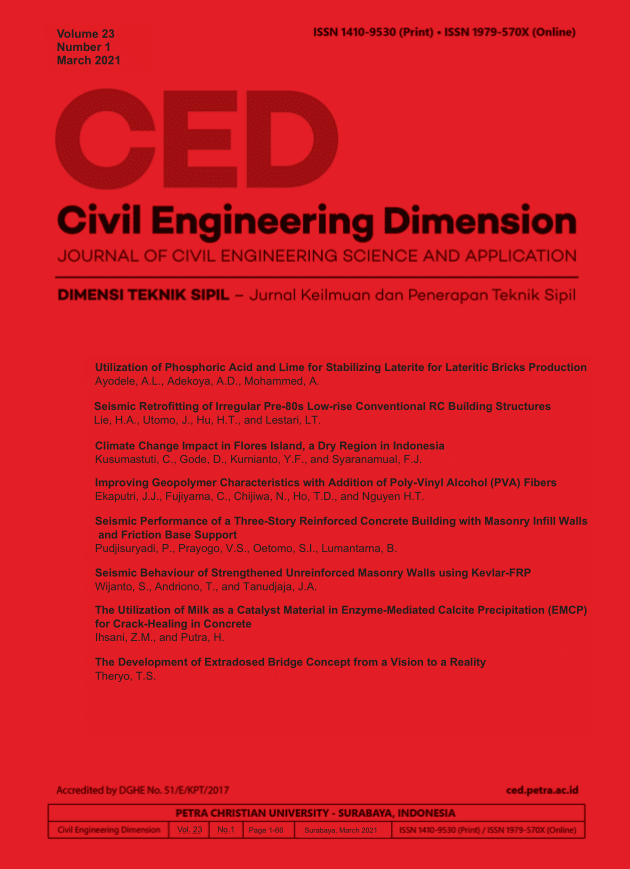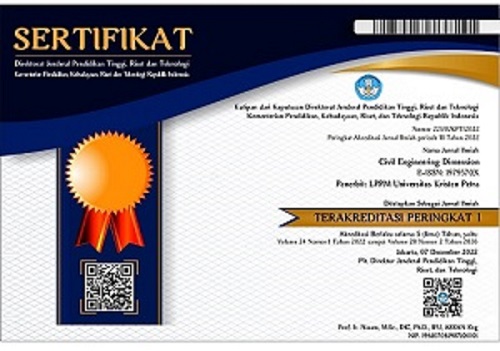The Development of Extradosed Bridge Concept from a Vision to a Reality
 :
:
https://doi.org/10.9744/ced.23.1.62-66
Keywords:
Concrete medium-span bridge, Extradosed, balanced cantileverAbstract
The development of Extradosed bridge from a vision to a real project is presented in this paper. Mathivat of France who is recognized as the inventor of this bridge type, envisioned a new bridge type suitable for medium span ranges in 1979. He suggested that some of the cantilever tendons in balanced cantilever bridge can be deviated to the top deck supported by short tower resemble stay cables. The structural benefit of this idea is increasing positive moment capacity by increasing eccentricity over the pier and enhanced shear capacity. Therefore, with the same conditions, longer span can be designed. Due to small angle of stay cables, the cable allowable stress at serviceability is about the same level with balanced cantilever bridge and no significant penalty on fatigue resistance unlike stay cables for conventional cable stayed bridges. The Extradosed bridge offers economic benefit for medium span range and aesthetically pleasing.
References
Mathivat, J., The Cantilever Construction of Prestressed Concrete Bridges, John Wiley and Sons, 1979.
Stroh, S.L., Extradosed Prestressed Bridges, 2014 FDOT Design Training Expo, Orlando, FL.
Mathivat, J., Recent Development in Prestressed Concrete Bridges, FIP Notes, 1988
fib Bulletin 97 External Tendons for Bridges, Final Draft January 2021 (to be published in 2021).
Standard Specification for Cable Stayed Bridge and Extradosed Bridge, Japan Prestressed Con¬crete Engineering Association, November 2000.
fib Bulletin 89 Acceptance of Cable Systems Using Prestressing Steels, 2019.
Kasuga, A., Extradosed Bridges in Japan, Fib Structural Concrete, 2006.
Downloads
Published
How to Cite
Issue
Section
License
Authors who publish with this journal agree to the following terms:- Authors retain the copyright and publishing right, and grant the journal right of first publication with the work simultaneously licensed under a Creative Commons Attribution License that allows others to share the work with an acknowledgement of the work's authorship and initial publication in this journal.
- Authors are able to enter into separate, additional contractual arrangements for the non-exclusive distribution of the journal's published version of the work (e.g., post it to an institutional repository or publish it in a book), with an acknowledgement of its initial publication in this journal.
- Authors are permitted and encouraged to post their work online (e.g., in institutional repositories or on their website) followingthe publication of the article, as it can lead to productive exchanges, as well as earlier and greater citation of published work (See The Effect of Open Access).

















